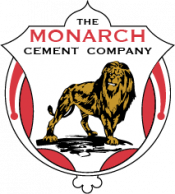The Monarch Process: Refining Quality
While the roots of cement go back centuries, the modern method for making it has been refined and improved over the last century. At Monarch, we honor this time-honored process while holding ourselves to a higher standard of quality. We’re proud to use the latest in technology for smarter, more efficient results that are also better for the planet. That allows us to create a better product for our customers while always providing personal and nimble service.
Quarry
The process begins with limestone. At our quarry, we begin by drilling holes, about 4-1/2 inches in diameter and 25 to 35 feet deep. These holes are loaded with explosives and blasted to create limestone pieces about 4 feet in diameter (also known as shot rock).
Loaders pick up the shot rock and dump it directly into the portable crusher, where it’s crushed to a diameter of 5 inches or less. Trucks then haul the crushed limestone to the stockpile at the plant. The stockpile consists of 40,000 to 60,000 tons of crushed limestone, the primary raw material in the cement manufacturing process.
Raw Grinding
Next, the limestone and other raw materials (shale) need to be crushed. Our 310-ton-per-hour roller mill uses waste heat from the kilns to dry the limestone and shale during the raw grinding process. Three 31-ton rolls are positioned vertically and tangent to the grinding table inside the mill. The weight of these rolls, plus an additional 1,500 PSI of hydraulic pressure, supply the needed force to pulverize the raw materials into kiln feed.
Finish Grinding
The final step is finish grinding. The Monarch finish milling system consists of five ball mills—large rotating cylinders containing steel balls. As the feed enters the mill, the balls continuously crush and grind the clinker and gypsum into a fine powder, a process known as comminution. This powder is sent to a classifier, where the coarser particles are returned to the mill for further grinding and the finer, more delicate particles are sent to a pneumatic pump and conveyed to storage silos.
Packing & Loading
Approximately 95 percent of Monarch cement is shipped in bulk trucks or rail hopper cars. An operator in a control room located between the scales selects the specified type of cement. The truck or rail car is then loaded and weighed on automated scales. It takes six to eight minutes to load a truck holding 25 to 28 tons, and about 30 minutes to load a rail car holding 100 tons.
The remaining cement produced is bagged on-site. The bags are filled in seconds, and are then automatically check-weighed, counted, and placed on pallets and automatically wrapped in plastic. The pallets are then loaded onto flatbed trucks for transport. More than 750,000 bags of Monarch Portland Cement and Monarch Masonry Cement are packaged each year.


